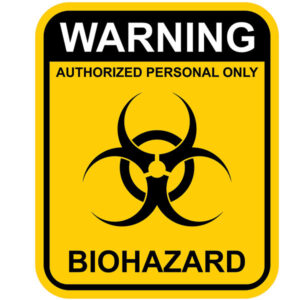Self-defense incidents can sometimes result in the need for scene cleanup, in order to remove any biological hazards or other harmful materials from where the incident occurred.
 You might think that the police, or the coroner’s office, would take up the task of cleaning up a crime scene, but you’d be wrong. The task of cleaning up a crime scene falls upon the owner of the property, or the person responsible for it.
You might think that the police, or the coroner’s office, would take up the task of cleaning up a crime scene, but you’d be wrong. The task of cleaning up a crime scene falls upon the owner of the property, or the person responsible for it.
And, because biological hazards are likely involved, it’s a job that should be completed by a professional used to dealing with all aspects of the cleanup—which also allows involved parties to avoid any emotional impact of the cleanup.
DEFINITION
Scene cleanup, also called crime scene cleanup, biohazard remediation, or forensic cleanup, begins once the police or coroner’s office release the scene to the property owner or other responsible parties.
Scene cleanup primarily removes blood, bodily fluids, and other potentially infectious materials. Any form of blood is treated as if it is infected.
Events that require scene cleanup include self-defense incidents, accidents, suicide, homicides, mass trauma, industrial accidents, infectious disease contamination, or tear gas residue.
 Elements of scene cleanup fall under:
Elements of scene cleanup fall under:
OSHA (Occupational Safety and Health Administration)
NIOSH (National Institute for Occupational Safety & Health)
DOT (Department of Transportation)
EPA (Environmental Protection Agency)
 PROTECTIVE GEAR FOR SCENE CLEANUP
PROTECTIVE GEAR FOR SCENE CLEANUP
Protective gear includes:
Foot covers
Liquid impermeable coveralls
Protective eyewear
Protective gloves
In the event of a self-defense incident, a person may be required to have a scene cleanup in their own home, a property they own, or other place they’re responsible for.
That’s why it’s important to have scene cleanup coverage, and why Firearms Legal Protection provides it with Individual Premium and Family Premium plans.

